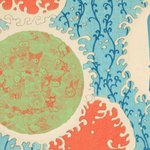
When Cú Chulainn eventually realised that he had been mortally wounded, he tied himself to a large stone so that he could die standing up, face to face with his enemies. There he remained for three days, still capable of striking fear into his foes. No one dared approach him. It was only when the Morrigan, in the form of a raven, perched on Cú Chul... See more
The Morrigan in Celtic Mythology
Komusō (虚無僧), meaning ‘priests of nothingness’ or ‘monks of emptiness,’ were wandering lay Buddhists of the samurai and rōnin class. Recognizable by their distinctive straw basket hats, which symbolized the erasure of ego, they practiced suizen (吹禅), or ‘blowing meditation,’ by playing the shakuhachi bamboo flute.
Durin... See more
instagram.comThe warriors and rich merchants who were retired gave rise to a class of the populace called the "literati" or bunjin (bun=literature; jin=person). This class was well versed in reading and




